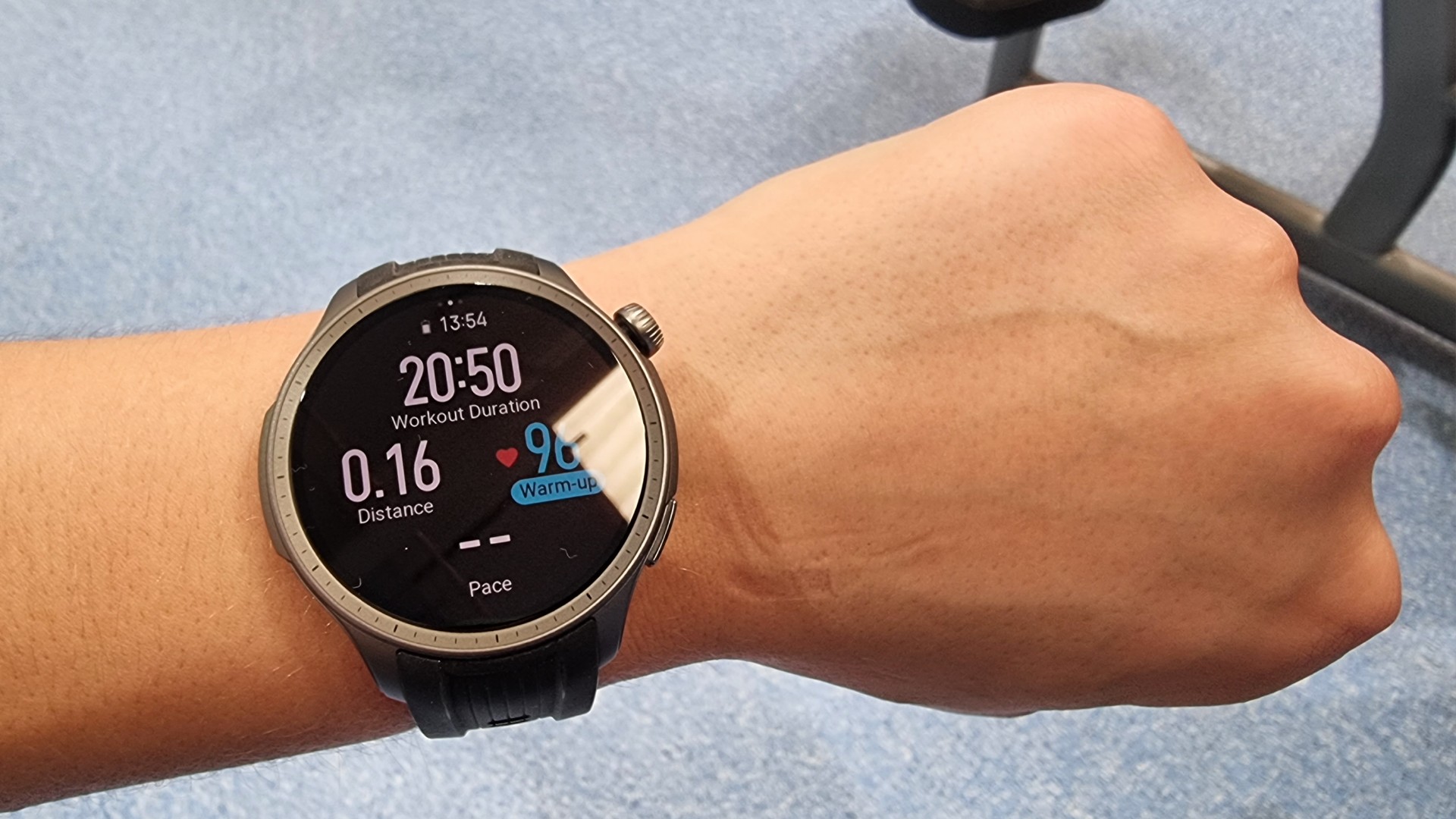Live Science Verdict
With good tracking performance, lightweight build, multiple wellness apps and long battery life, the Amazfit Balance smartwatch punches way above its affordable price point, making it a great option for fitness beginners and people aiming to improve their sleep and post-exercise recovery.
Pros
- +
Accurate tracking features
- +
Light and compact
- +
Long battery life
- +
Great value for money
Cons
- -
No Gorilla Glass or Sapphire Crystal on the screen
- -
Some additional features are subscription-only
Why you can trust Live Science
The Amazfit Balance is the latest addition to the range of affordable fitness trackers offered by the fast-growing Chinese brand. However, this time around Amazfit decided to focus on holistic wellness rather than exercise performance. According to the company, Amazfit Balance is designed to help its users strike the right balance between physical activity and recovery, largely due to its extensive sleep-tracking features and wellness apps. But can this budget smartwatch deliver on the promise?
Display: AMOLED 1.5 inch - 480x480 (Round)
Always-On: Yes
Dimensions: 46x46x10.6mm
Colors: Sunset Gray, Midnight Black
Finish: Aluminum
GPS: Yes
Compass: Yes
Altimeter: Yes
Water resistance: 5 ATM
NFC Payments: Zepp Pay
Sensors: Body composition, body temperature, heart rate, heart rate variability, blood oxygen, breathing rate
Compatibility: Android 7.0 and above, iOS 14.0 and above
Storage: 2.2GB storage for music
Battery life: Approximately 14 days
Established in 2015, Amazfit is still a relatively young brand, but it does make products that can compete with some of the best fitness trackers on the market. At Live Science, we know Amazfit’s smartwatches offer good value for money and the Balance seems no different. This sleek-looking fitness tracker comes with a lightweight build, powerful battery, dual-band GPS navigation and multiple health-tracking features, including for body composition, sleep quality and stress levels — all for a reasonable $229.99.
So is the Amazfit Balance smartwatch worth investing in? To find out, we put it through its paces in our at-home tests. Read on to see how it went.
Amazfit Balance: How we tested
We spent a month testing the Amazfit Balance smartwatch, looking at its features, durability, battery life, connectivity with third-party devices and ease of use. We wore it during the day, while sleeping, and when doing different cardio and strength workouts. Finally, we checked the accuracy of our Amazfit Balance smartwatch by comparing some of its measurements with the data we obtained using more professional devices, such as a chest-strap heart rate monitor.
Amazfit Balance: Design
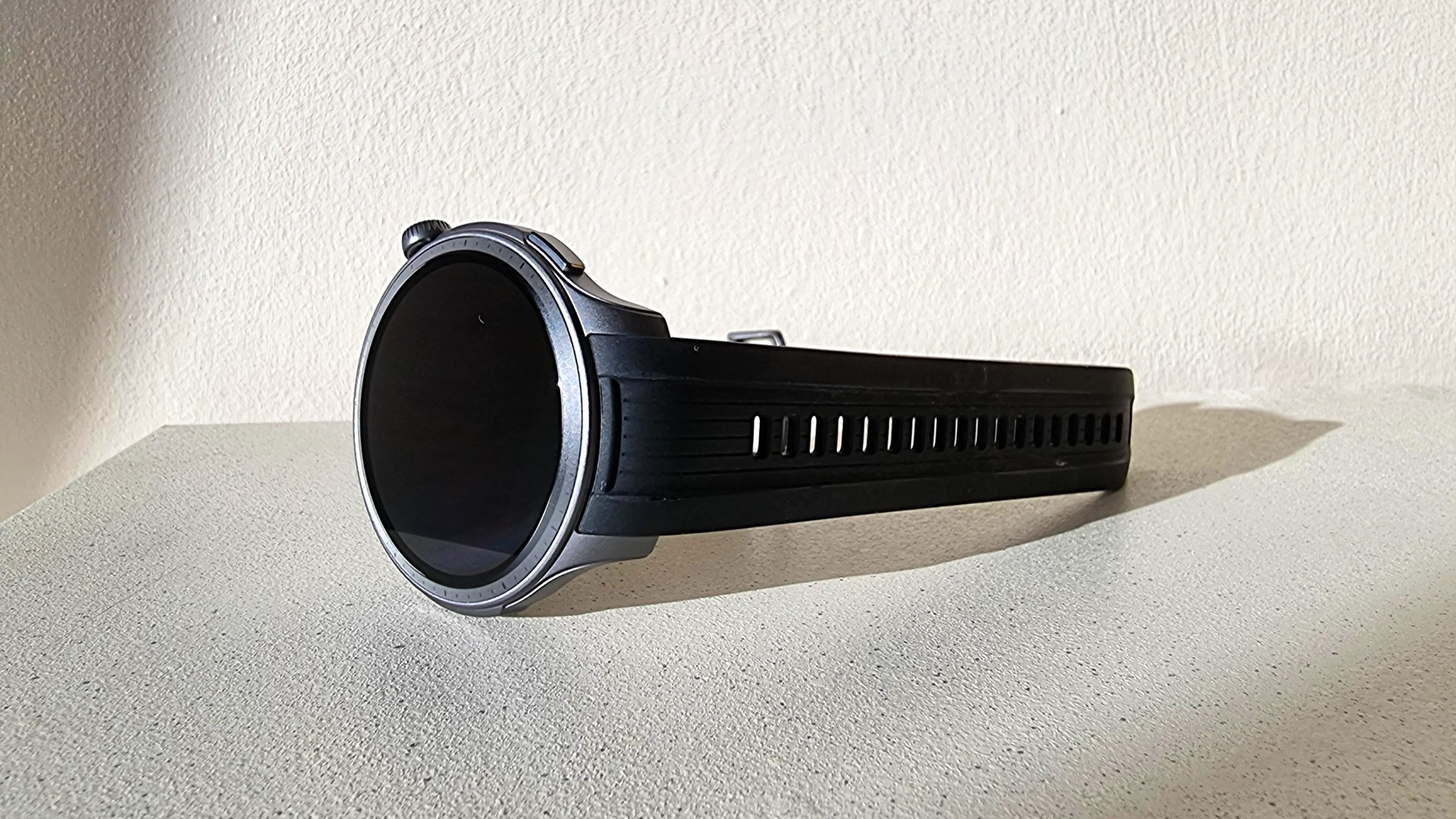
The Amazfit Balance is one of the most compact and unobtrusive smartwatches we have ever tested. Most of the time we even forgot that we were wearing it. We also liked its simple yet stylish look, easy-to-operate controls and comfortable strap.
In the spirit of sustainability, the Amazfit Balance smartwatch comes in a small cardboard package, alongside a short user guide and pocket-sized charging dock. The setup process is quick and easy — download the Zepp app, pair the device using a QR code displayed on the watch face, and then follow a brief but detailed tutorial. We liked this minimal use of plastic and a hands-on approach to learning the controls. However, this also means that the instruction manual — which is the size of a pinky finger, no more — covers only basic information about the device, and some people may find the tiny booklet difficult to read.
The Amazfit Balance weighs only 1.2 ounces (35 grams) — for comparison, the Apple Watch Series 8 weighs 1.48 ounces (42.3 g), and many Garmin models pack more than 1.75 ounces (50 g). The watch face is smooth and slender, and comes with two controls positioned on the right side: a button and a crown. Both controls are on the small side, but we found them responsive and easy to operate, and at no point during testing did they catch on clothes or workout equipment.
Get the world’s most fascinating discoveries delivered straight to your inbox.
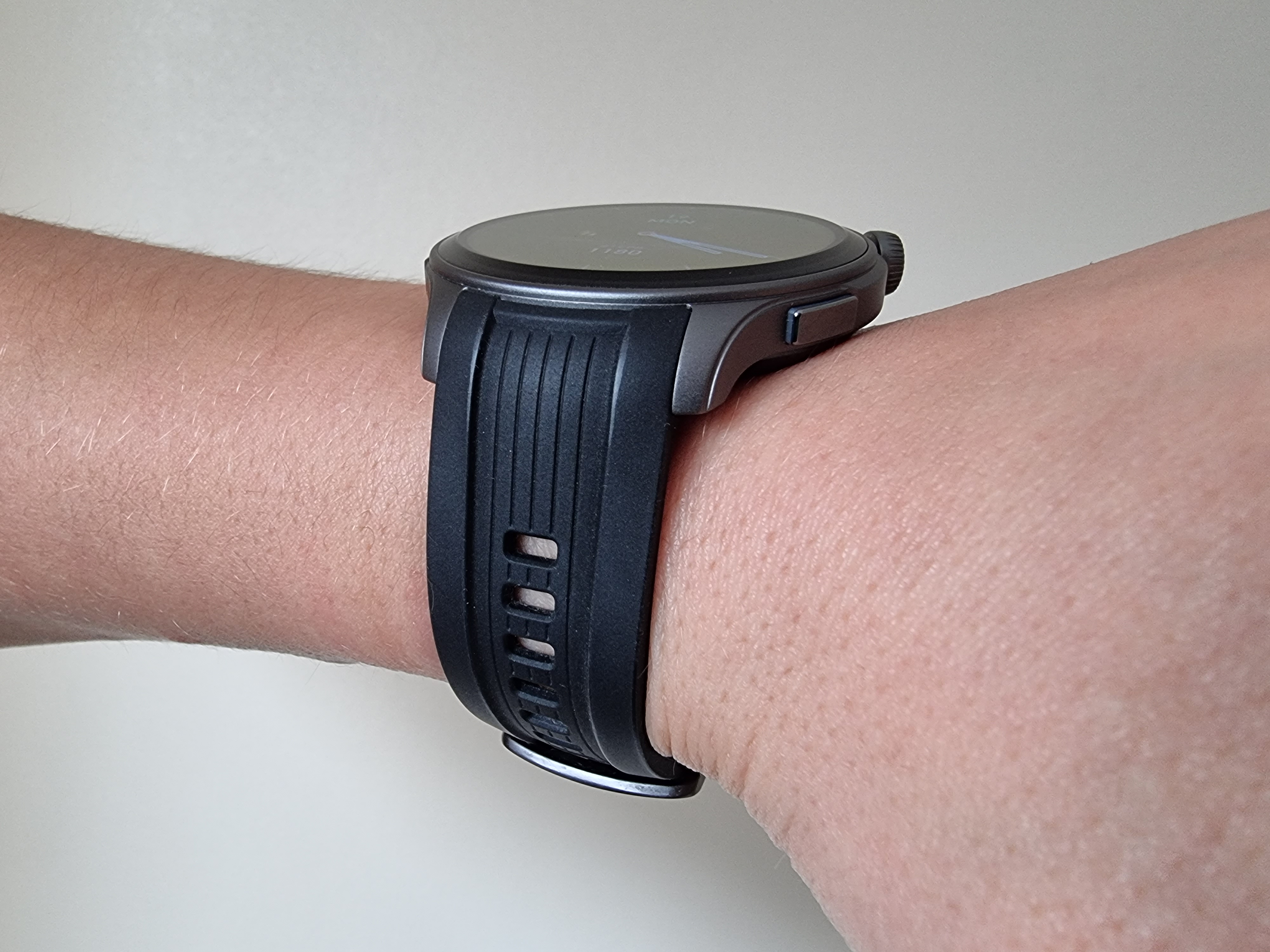
The Amazfit Balance smartwatch comes in two main color options: Midnight Black, with a silicone strap and a pin buckle, and Sunset Gray, with a patterned nylon hook-and-loop strap. At the time of writing this review, Amazfit also offered four ’special edition’ options, all with silicone straps in beautiful earthy colors.
Here, we tested the Midnight Black option — and we really liked it. The strap was buttery soft and comfortable to wear, did not slide or aggravate the skin during sweaty exercise, and worked just as well with our bright gym wear as it did with everyday outfits. It did not seem to attract dirt, either.
Amazfit Balance: Display

The Amazfit Balance smartwatch impressed us with its crisp 1.5-inch HD AMOLED display. With a high 480x480 resolution and an anti-glare glass bezel, the screen was bright, colorful and easy to read, even under the artificial lights of our local gym. The touchscreen was responsive, did not lag during power-intensive tasks, and for the most part, stayed free from fingerprint marks and dust.
We also liked how customizable the display was. There are several pre-loaded watch faces to choose from, and loads more can be purchased in the Zepp store. Icons can be moved around or deleted as needed, and widgets arranged in an order that suits you the most.
We did not notice any scratches or wear-and-tear damage on our Amazfit Balance after a month of testing, but then we did not have the opportunity to wear it in challenging conditions. We would not bet on it faring well, though. Tempered glass is not as durable as Gorilla Glass or other sturdy materials typically used in more premium fitness trackers. As such, we suspect that the Amazfit Balance smartwatch may not be the best option for fans of extreme outdoor sports or those who work with heavy tools, for example.
Amazfit Balance: Features
The Amazfit Balance measures heart rate, heart rate variability, breathing rate, blood oxygen, body temperature and body composition, including body fat percentage, muscle mass, bone mass and hydration levels. Based on these data points, the smartwatch can then assess other metrics, such as how many calories you need, how stressed you are, the quality of your sleep, and your exercise performance.
The Amazfit Balance also uses a set of simplified stats to give a more holistic picture of your health. For example, when worn at night, the watch will calculate a Readiness Score in the morning — a measurement of "how mentally and physically recharged you are for the new day," on a scale of 1 to 100. When that score is low, or changes over time, the Amazfit Balance will point out possible causes and advise you on how to improve your energy levels. The Readiness Score may not be very "sciencey," but we found it surprisingly insightful and practical.
Living up to its name, the Amazfit Balance offers plenty of mini wellness apps, most of which are free of charge, including the flagship Zepp Fitness, Breathing Exercises and Meditation apps. Some app features require a subscription, though — Zepp Aura, an AI-powered sleep coaching service, or the AI-powered chatbot in the Zepp Coach app, for example. Having such a digital coach could be helpful for beginners and those who struggle with motivation or sleep hygiene. For others, however, opting out of these subscriptions will likely not impact their overall experience with the smartwatch.
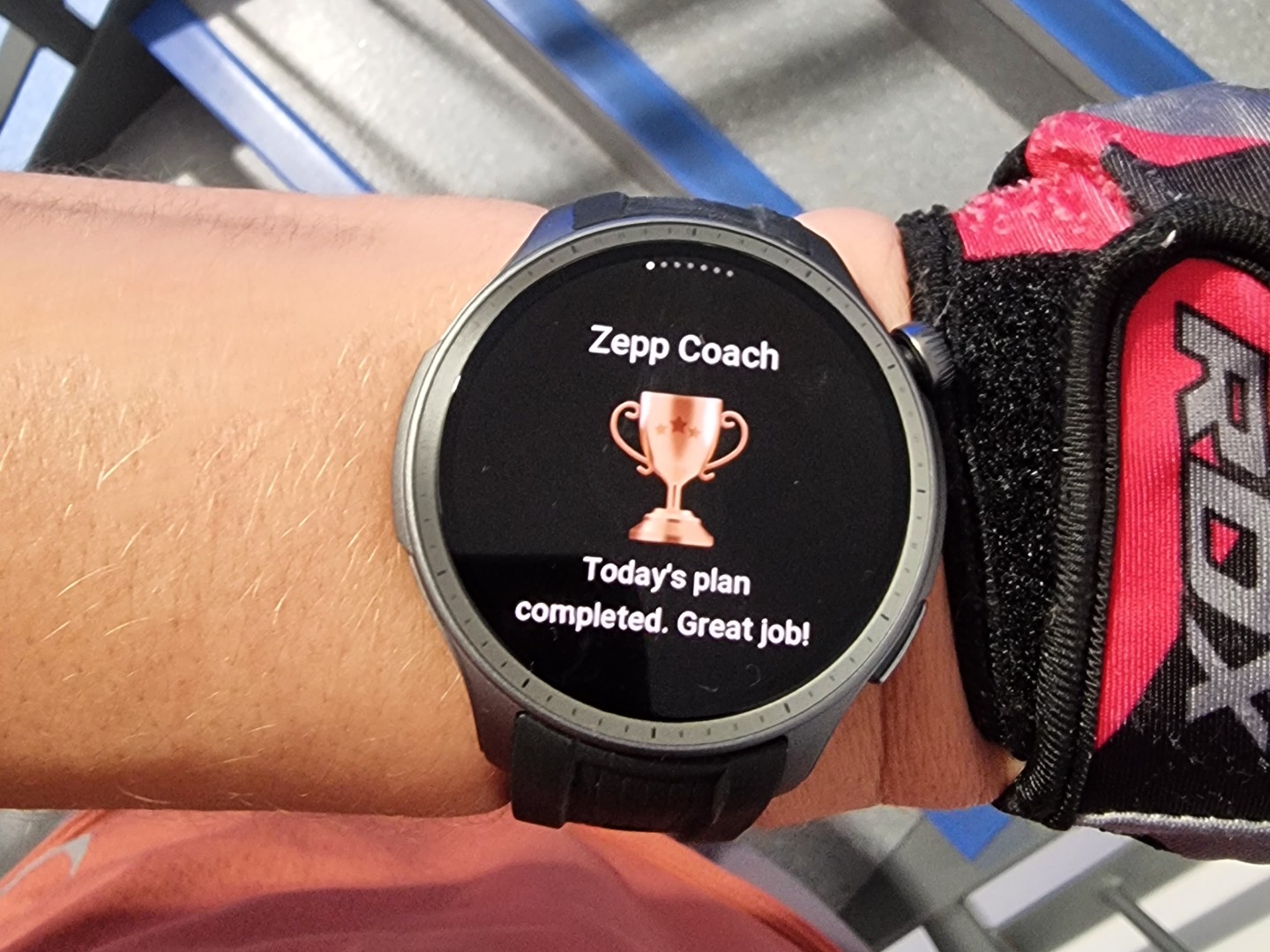
The Amazfit Balance can track over 150 sports, including snowboarding, strength training and pool swimming. It can auto-detect and track 25 different types of exercise with metrics such as reps, sets and rest times. The Zepp Coach app can create personalized workout plans and guide you to get the most out of your exercise routine — even if it is in the great outdoors. That is because the Amazfit Balance is equipped with dual-band GPS tracking that utilizes signals from six satellite systems, a compass and an altimeter.
This smartwatch also comes with a built-in speaker and microphone, and can be used for making calls, playing music, contactless payments (but only with the Zepp Pay app) and many other aspects of daily life.
Amazfit Balance: Performance
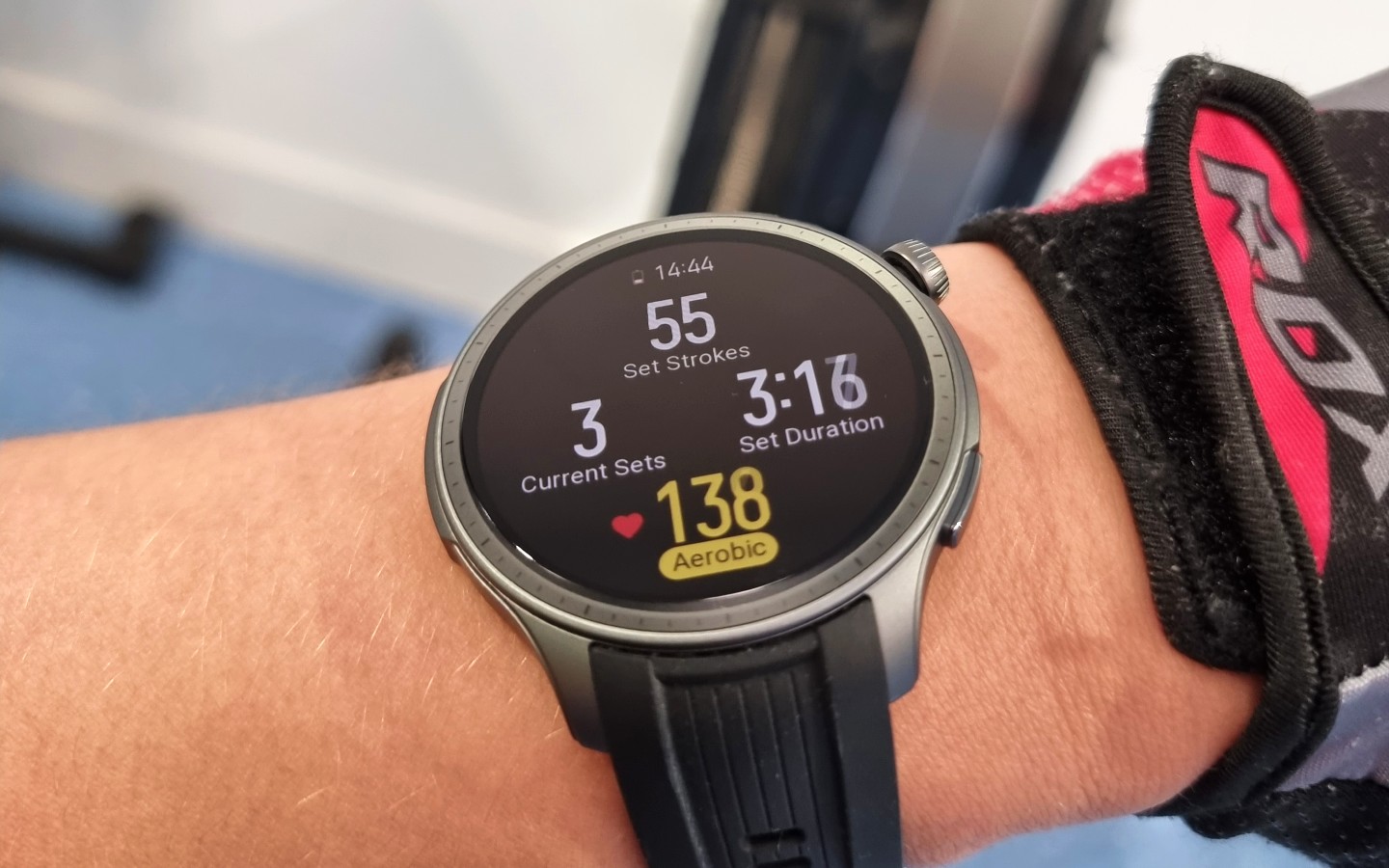
The Amazfit Balance smartwatch impressed us with its long battery life. On low to moderate GPS accuracy settings, a single charge can power up the watch for up to two weeks. But even with intense daily use, continuous health-tracking and high GPS accuracy enabled at all times, our Amazfit Balance still managed to last a full week. It is not common to see such a trooper.
The sensors in the Amazfit Balance appeared surprisingly accurate. During one workout, we wore the watch alongside a chest-strap heart rate monitor, and continuously measured the heart rate on both devices. Our Amazfit Balance accurately identified all peaks and drops in heart rate, albeit understandably not with quite the same precision as the chest-strap device.
Then, we used a standing bioimpedance machine to test the accuracy of its body composition sensors. These giant scales with handles are far superior to tiny watches in calculating body fat percentage, muscle mass and other metrics, so it was quite a surprise to see a striking similarity between the readings — the Amazfit Balance underestimated the fat percentage by only 1.5%, for example. The only sensor that seemed to habitually underestimate the values was body temperature. It did, however, seem to pick up on trends, such as lower body temperature when sleeping.
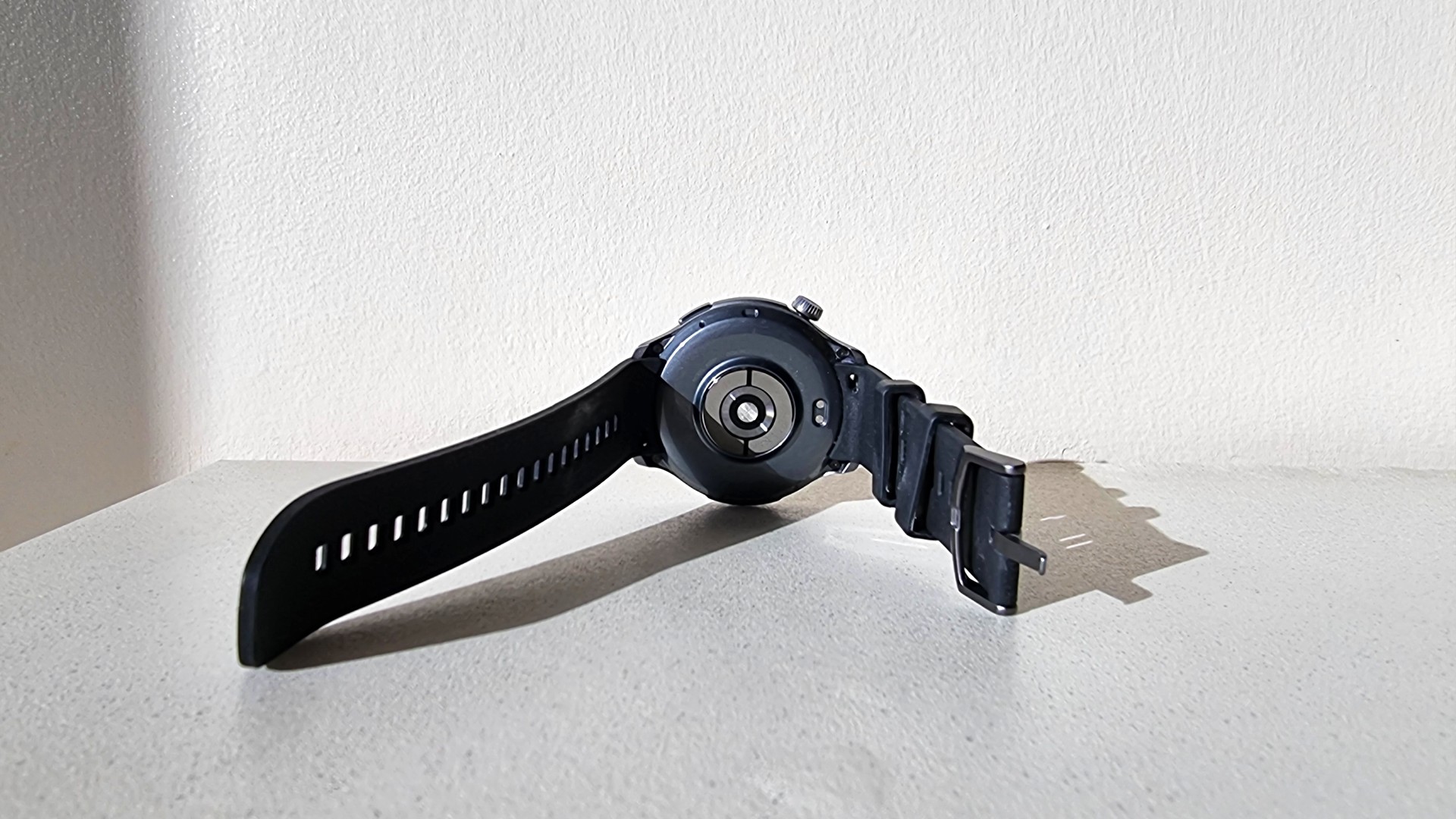
The sleep tracking feature was generally accurate. For the most part, the Amazfit Balance did a good job at identifying times when we fell asleep, woke up during the night or got out of bed in the morning. However, we also found that relaxing with a book or TV show in the evening may trick the watch into thinking you are sleeping — but that is something we have seen in more premium fitness trackers, too.
The workout tracking features also performed relatively well, especially with running, rowing and other cardiovascular activities. Amazfit Balance kept up with our steps, strokes and jumps, and was fairly good at estimating our pace and distance. We were, however, slightly disappointed with its strength-training feature. The watch struggled to capture movements properly at times, especially during lower body exercises, and often underestimated the number of repetitions.
Amazfit Balance: User reviews
The Amazfit Balance smartwatch scores a respectable 4.3 out of 5 stars on Amazon, with 64% of users giving it a full five stars. Positive reviews praised this watch for its compact, stylish design, the accuracy of its tracking features, and long battery life. Many users considered the Amazfit Balance smartwatch great value for money, and a good compromise between function and form.
As one user commented, "If you're a fitness fanatic I'd look elsewhere (Garmin? Fitbit?). If you're a data junky, check Apple Watch or Google Pixel. If you're after a bit of both on (probably) the best-looking smartwatch you can buy then I'd recommend the Balance."
Negative reviews, though few and far between, cited problems with connectivity to mobile devices and hit-and-miss tracking of sets and reps during resistance workouts. One user also commented, "Make sure you get a screen protector as it's easy to scratch."
Should you buy the Amazfit Balance smartwatch?

If you are looking for a high-performing smartwatch at an affordable price, the Amazfit Balance should be on your radar. It boasts a wide range of health-tracking features and stylish looks, all without overloading your wrist with heavy machinery or compromising on battery life. The Amazfit Balance is a great all-rounder for most people, but it can be particularly useful for beginners and people aiming to improve their sleep and post-exercise recovery.
However, if you are looking for a smartwatch that can handle severe weather conditions or survive falls from great heights, you may need to find a different, potentially much pricier model. The Amazfit Balance seems perfect for a sweaty spin class or a treadmill run, but it may not be sturdy enough to deal with more challenging outdoor conditions.
If this product is not for you
If you are looking for a smartwatch that has similar functionality to Amazfit Balance, but comes with a sturdier build, check out the Garmin Venu 2 Plus. Its display features Gorilla Glass, stainless steel and a hardy PVC coating, making it more resistant to scratches and damage.
If you would rather find something more affordable, Amazfit Bip 3 Pro could be a better option. This user-friendly smartwatch comes with a two-week battery life, a large display and a built-in GPS. However, it does sacrifice some of the tracking accuracy.

Anna Gora is a health writer at Live Science, having previously worked across Coach, Fit&Well, T3, TechRadar and Tom's Guide. She is a certified personal trainer, nutritionist and health coach with nearly 10 years of professional experience. Anna holds a Bachelor's degree in Nutrition from the Warsaw University of Life Sciences, a Master’s degree in Nutrition, Physical Activity & Public Health from the University of Bristol, as well as various health coaching certificates. She is passionate about empowering people to live a healthy lifestyle and promoting the benefits of a plant-based diet.
